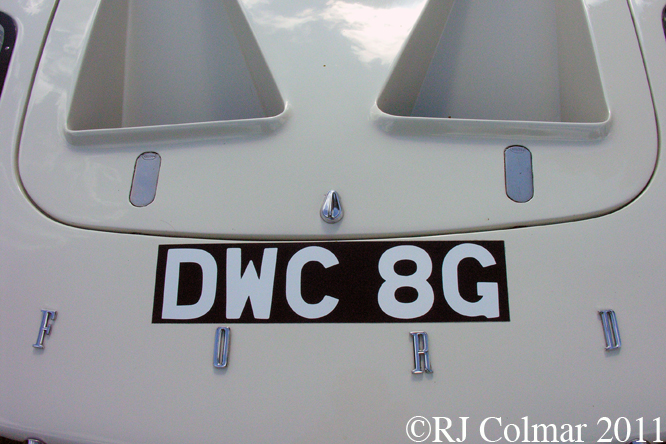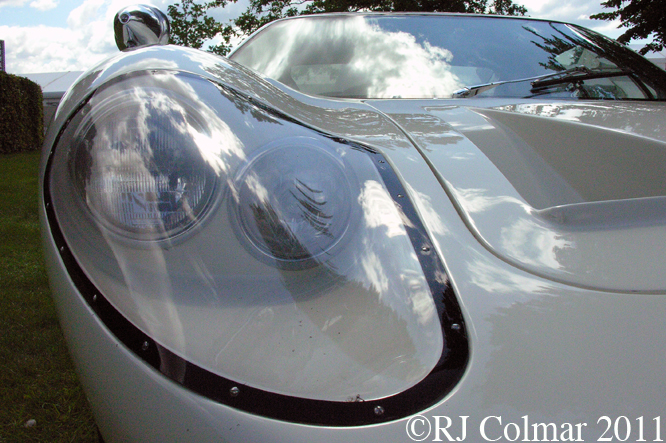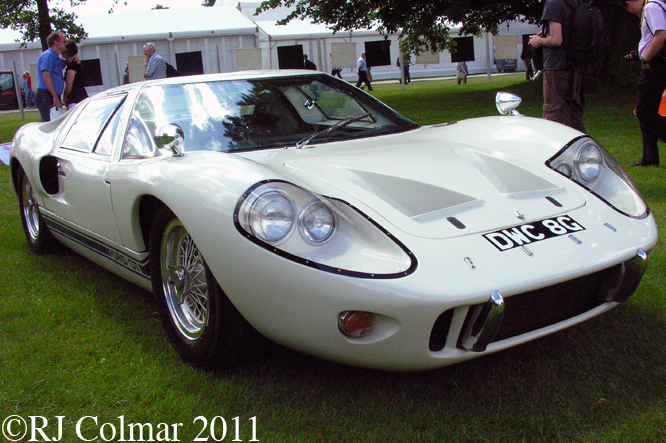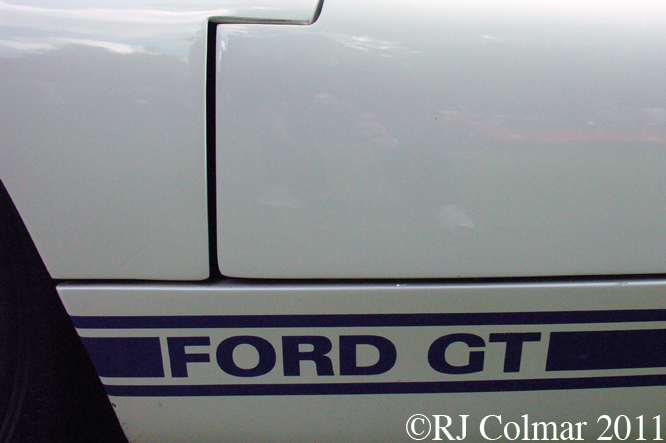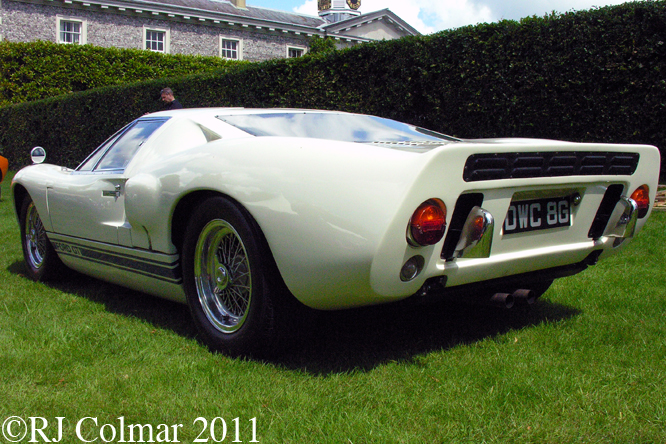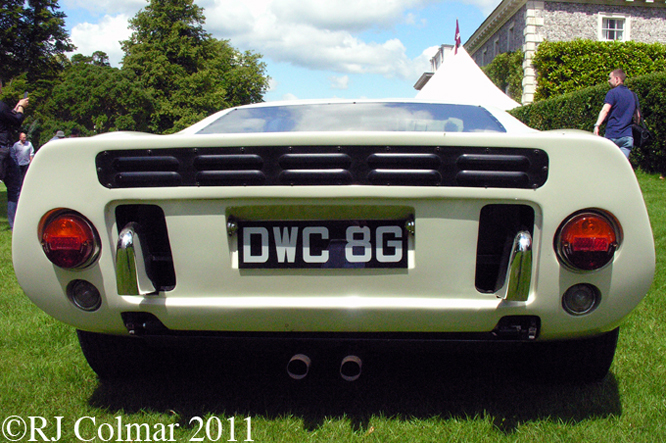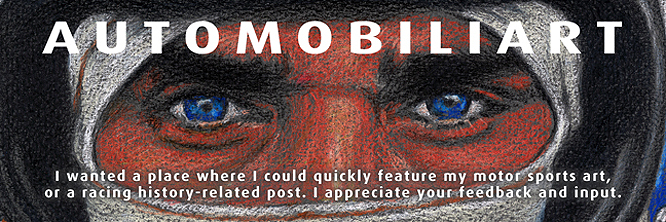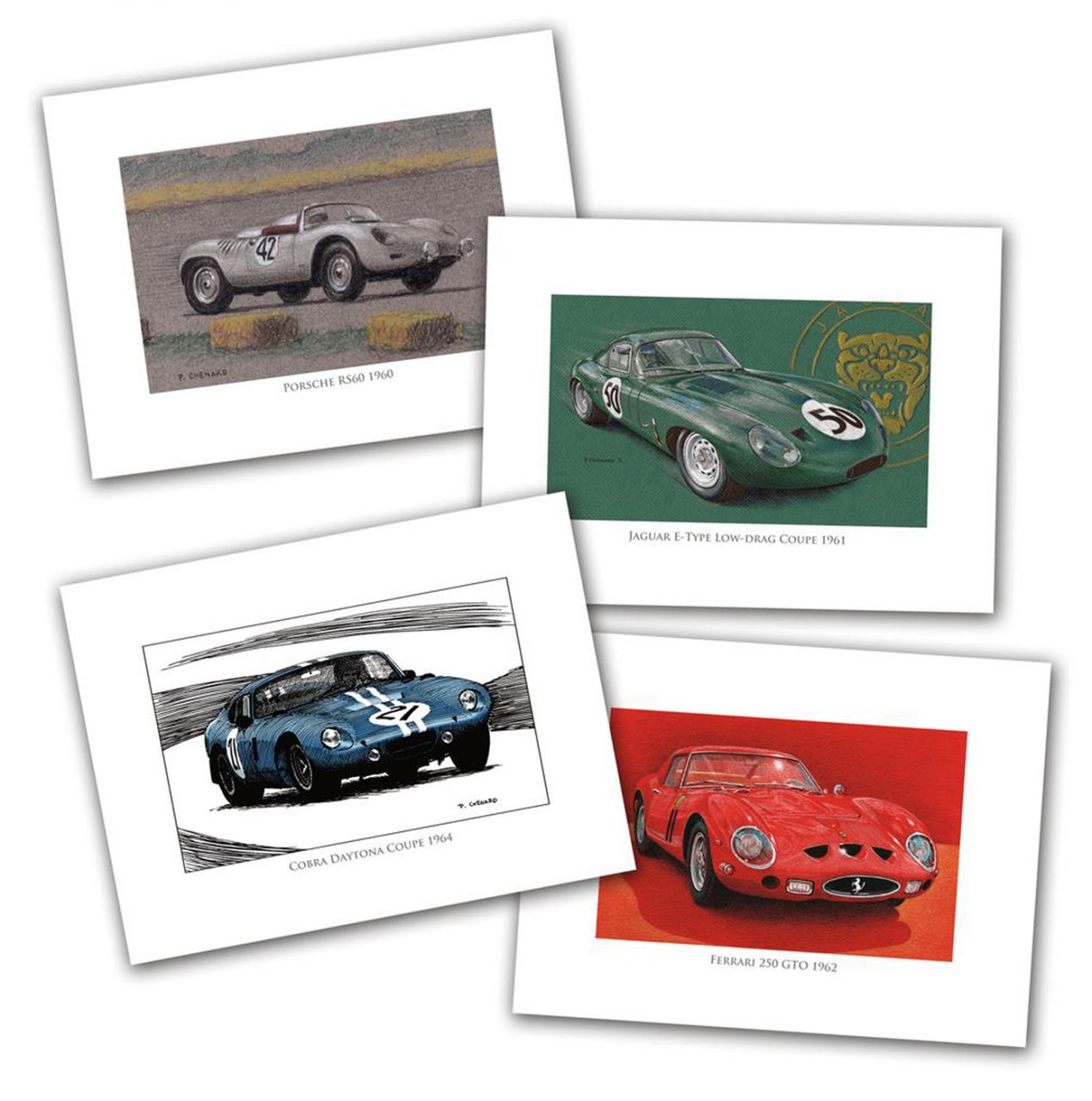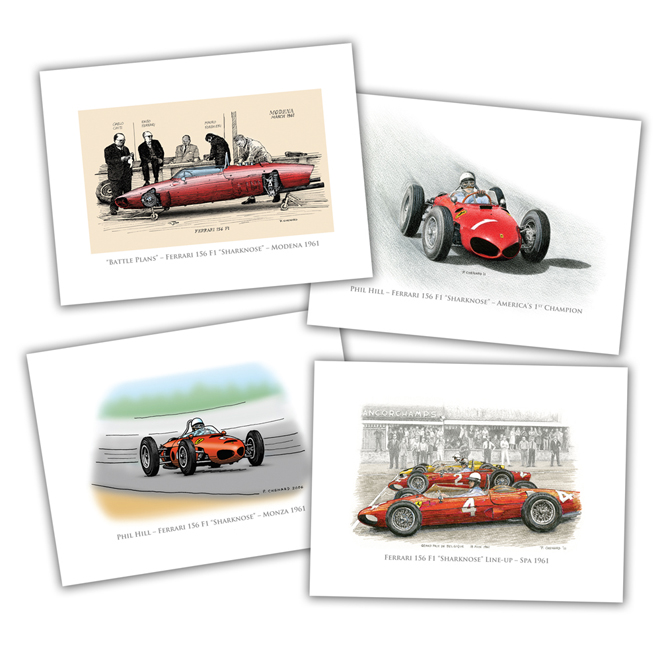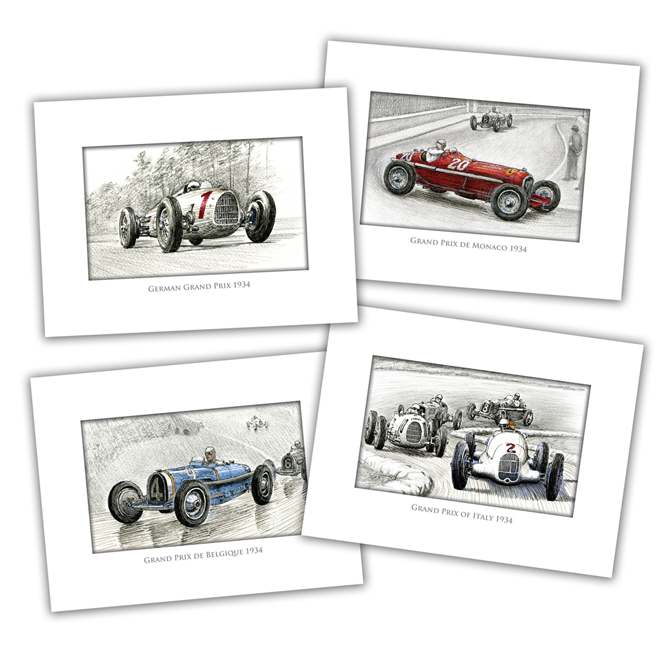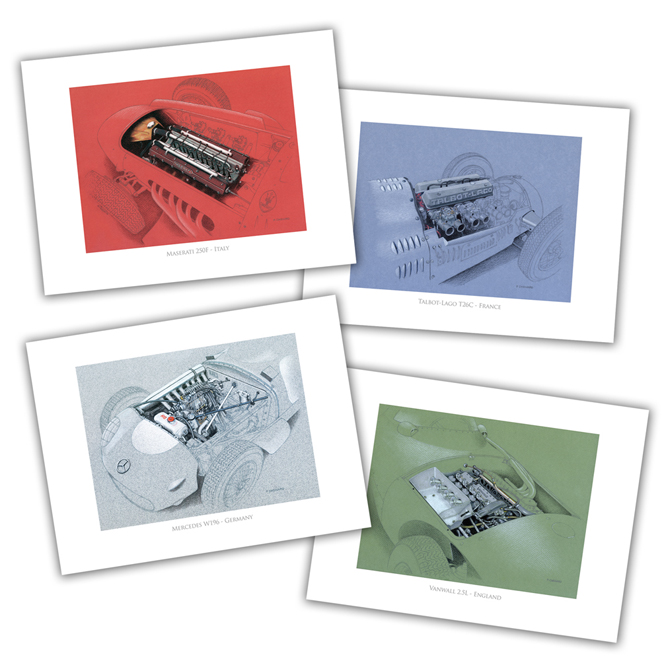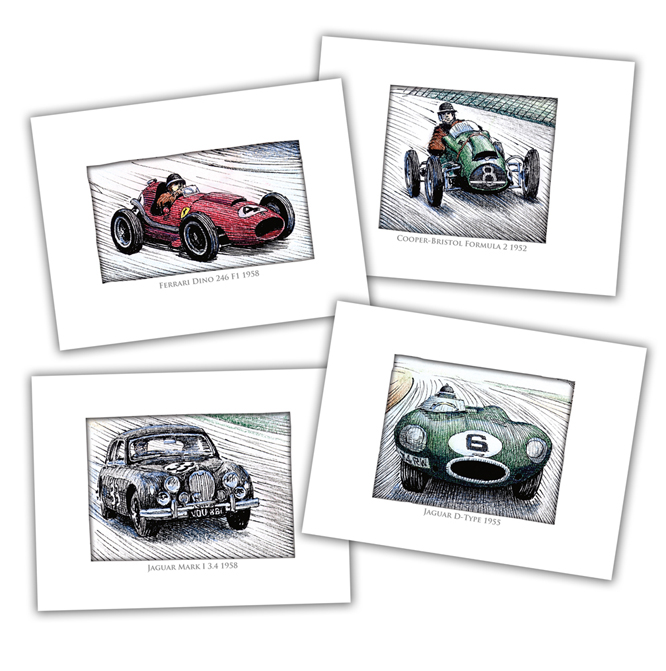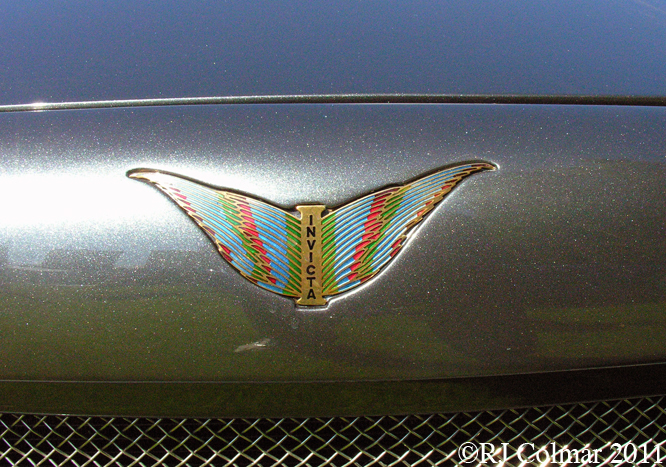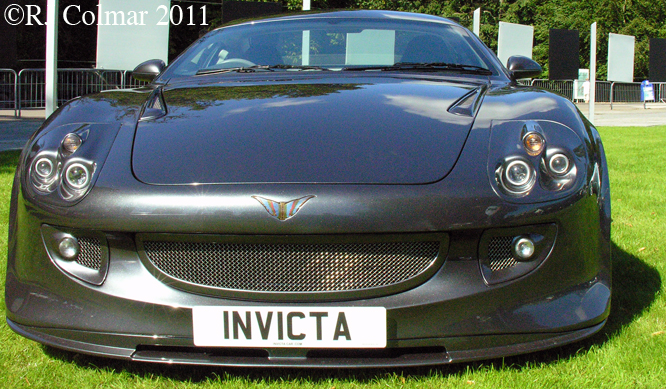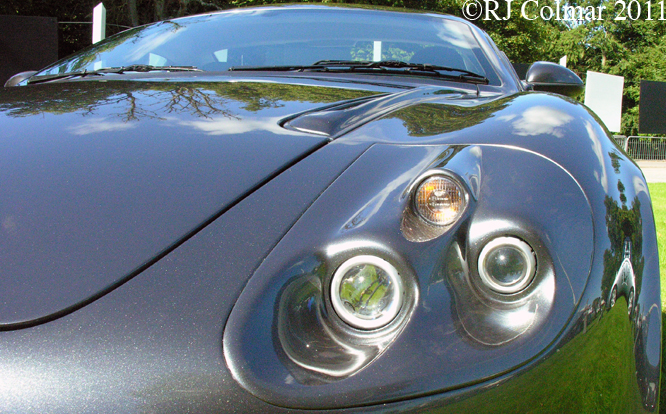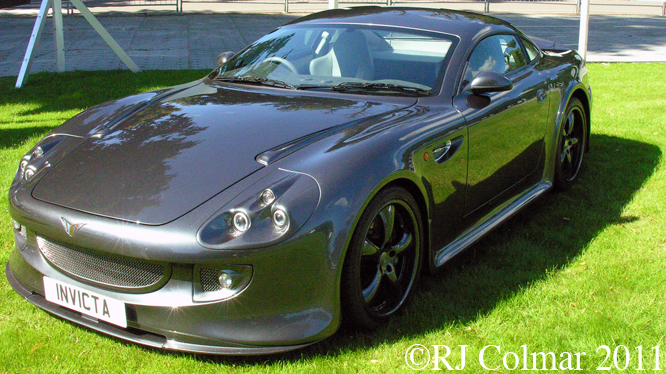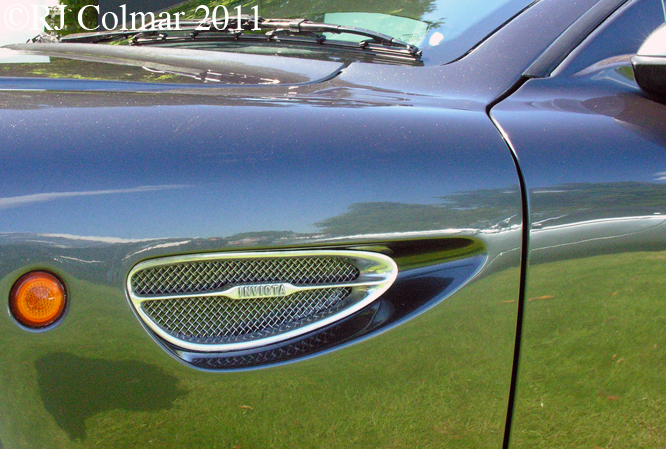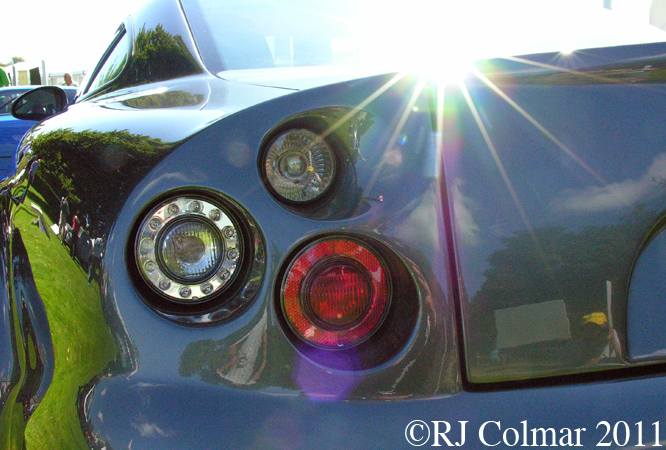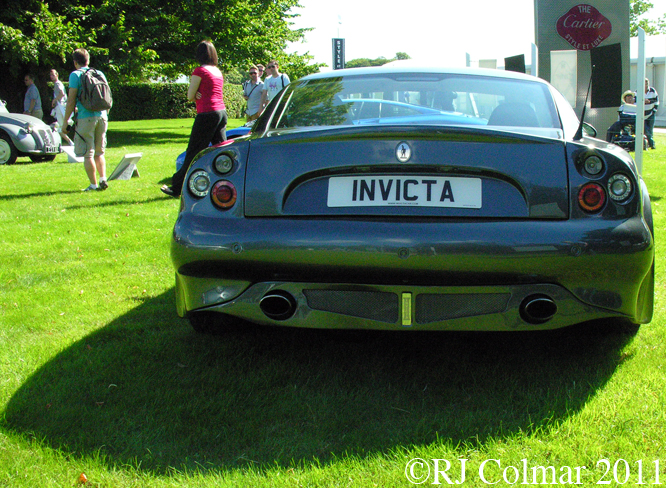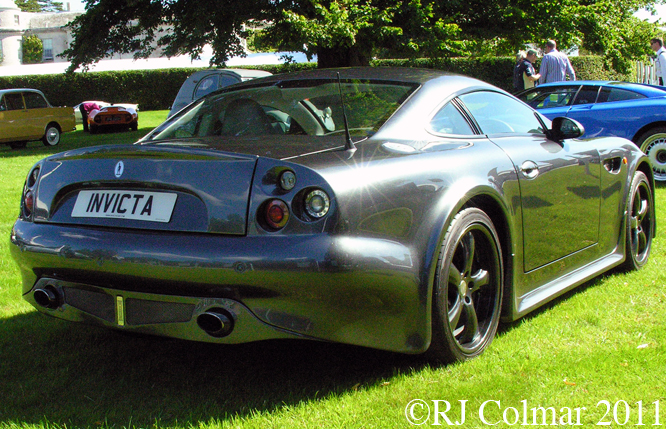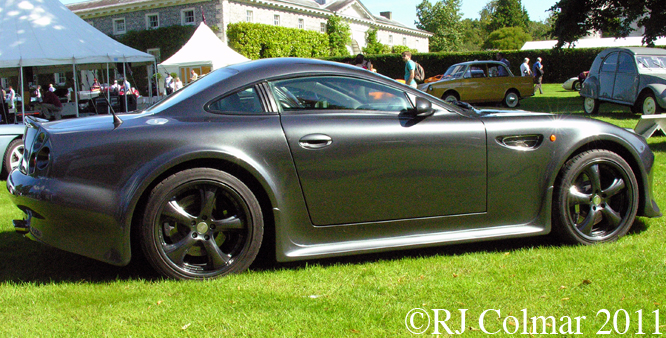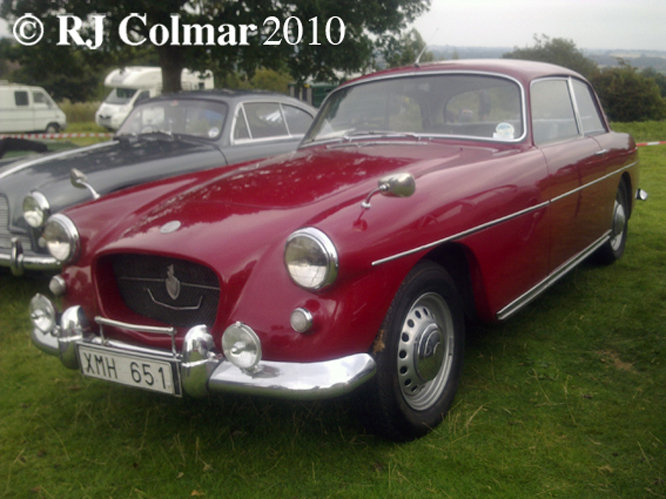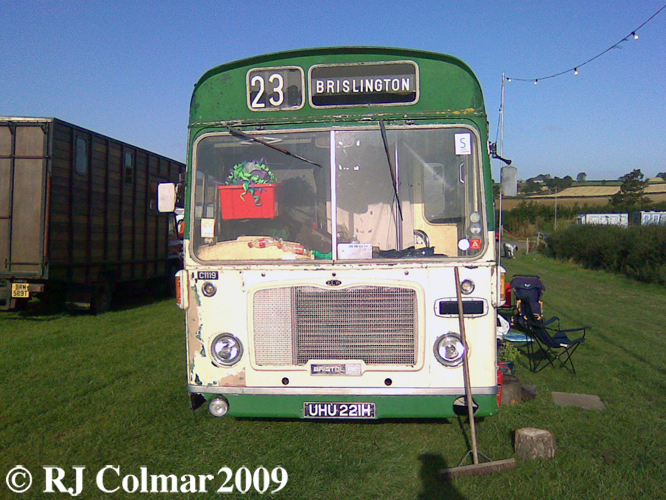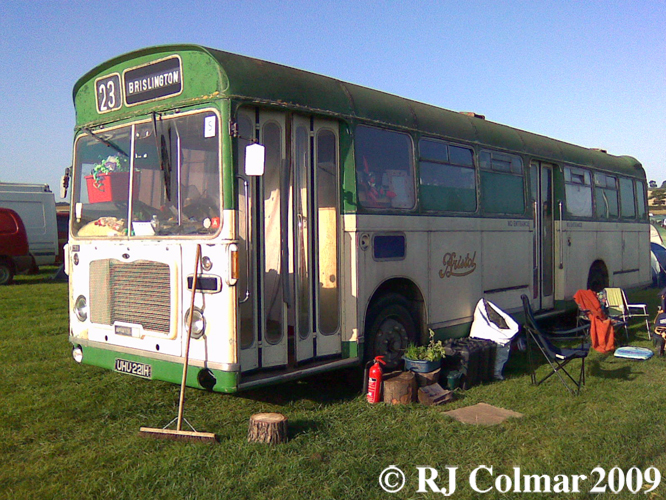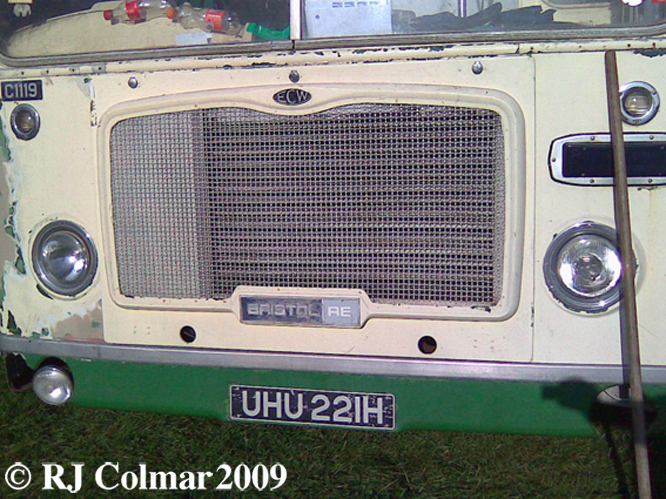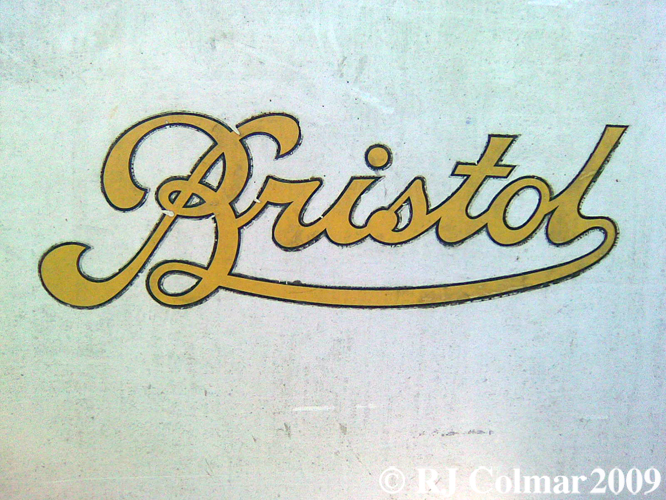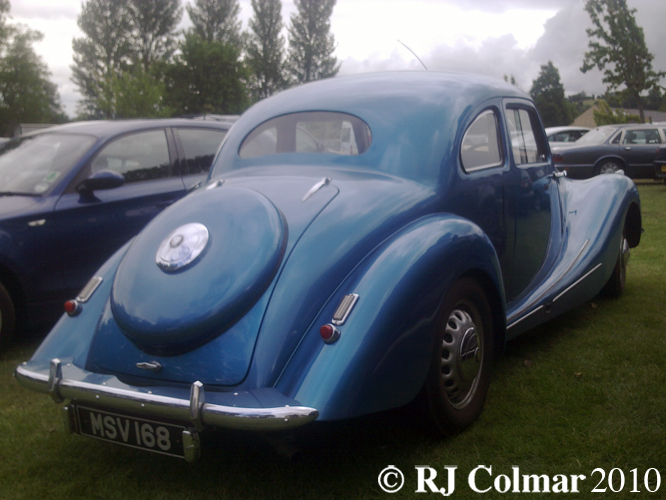In order for Ford to meet the mandatory minimum 50 production number for it to be able to race, Ford sold at least four of it’s Mk1 GT40’s for road use with a minimum of primarily luxury modifications which included, interior carpeting, non-perforated leather seats, and leather door pouches, additionally today’s featured car #GT40 P/1034 was also fitted with wing mirrors, a heated rear screen and reversing light’s. Beyond that the car was equipped with a race tuned 380 hp, 289 cu. in. V-8 engine with four Weber 48IDA carburetors, five-speed ZF manual transmission, four-wheel independent suspension, and four-wheel disc brakes just like the racers alongside which it was built at Ford Advanced Vehicles in Slough, England.
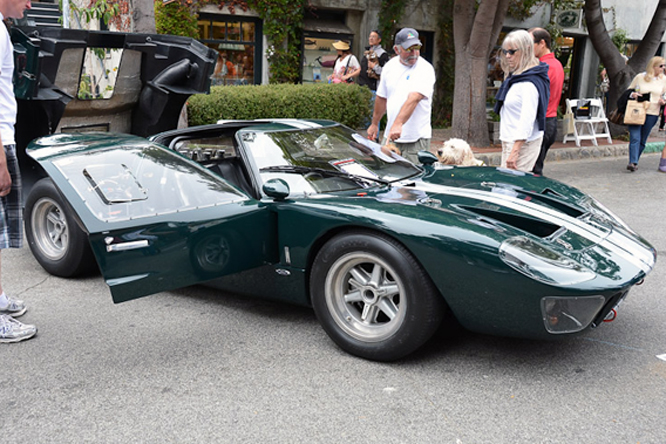
This particular car, seen in these photographs by Geoffrey Horton at Carmel by the Sea Concours on the Avenue last year, was ordered by James Fielding, of Gloucester, England painted Pine Green with no stripes on the rocker panels. Fielding was Chairman of Heenan & Froude, the company that manufactured the dynamometers on which the GT40s were tested and P/1034 was the first GT40 to be delivered to a UK customer in March 1966. Fielding used it exclusively as a road car.
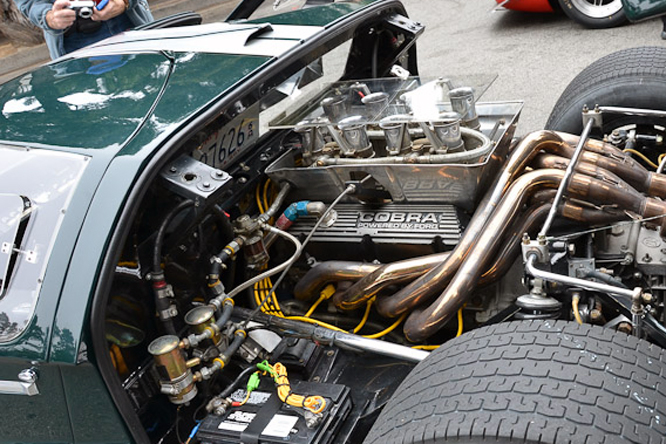
Subsequent owners including Paul Weldon and Australian George Parlby raced the car in classic events, Parlby even had the car painted in the colours of the Gulf Oil Company during a rebuild.GT40 specialist and enthusiast Harley E. Cluxton III, of Scottsdale, Arizona acquired #P/1034 at one point and later it went to Germany where Peter Roessler drove it to victory in the Grand Prix of Stuttgart held at the Hockenheimring.
David Bowden, of Queensland, Australia acquired P/1034 in 1999 where it was again frequently successfully raced by the likes of Kevin Bartlett. In 2001 David had the car repainted it’s original Pine Green with a pair of non original silver stripes.
The current owner returned P/1034 to the USA and earlier this year turned down a high bid of $2,150,000 at RM Auctions for this sublime vehicle.
My thanks to Geoffrey Horton for sharing his photograph’s of today’s featured Ford GT40.
Thanks for joining me on this “Hold The Rocker Panel Stripes” edition of “Gettin’ a li’l psycho on tyres” I hope you will join me again tomorrow. Don’t forget to come back now !



